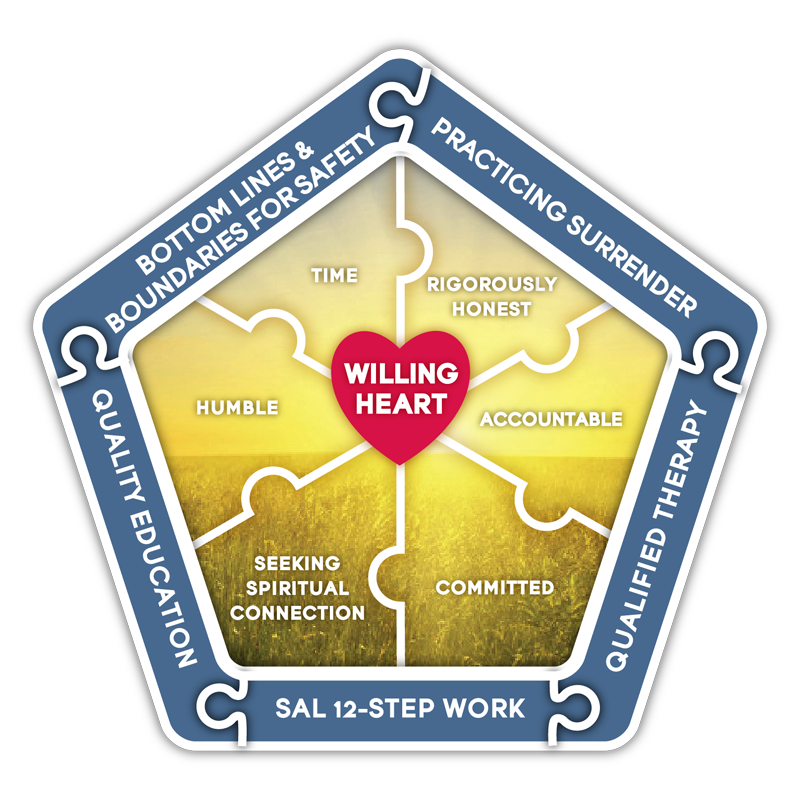The S.A. Lifeline Recovery Puzzle
A puzzle isn’t complete without every piece in its place. Likewise, every piece of the Recovery Puzzle is unique and important.
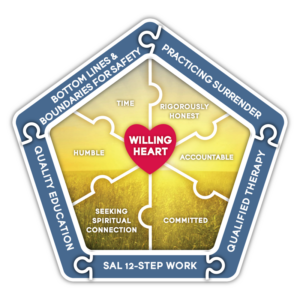
The work of recovery and living in recovery revolves around a Willing Heart and Rigorous Honesty.
When we choose to have a willing heart, and choose to be rigorously honest, we finally let go of all the façades and justifications. Counter intuitively, this letting go does not bring feelings of despair; instead, we begin to see it as the golden doorway to hope—no matter how bleak our circumstances may be.
Model of Pornography Use & Sexual Addiction
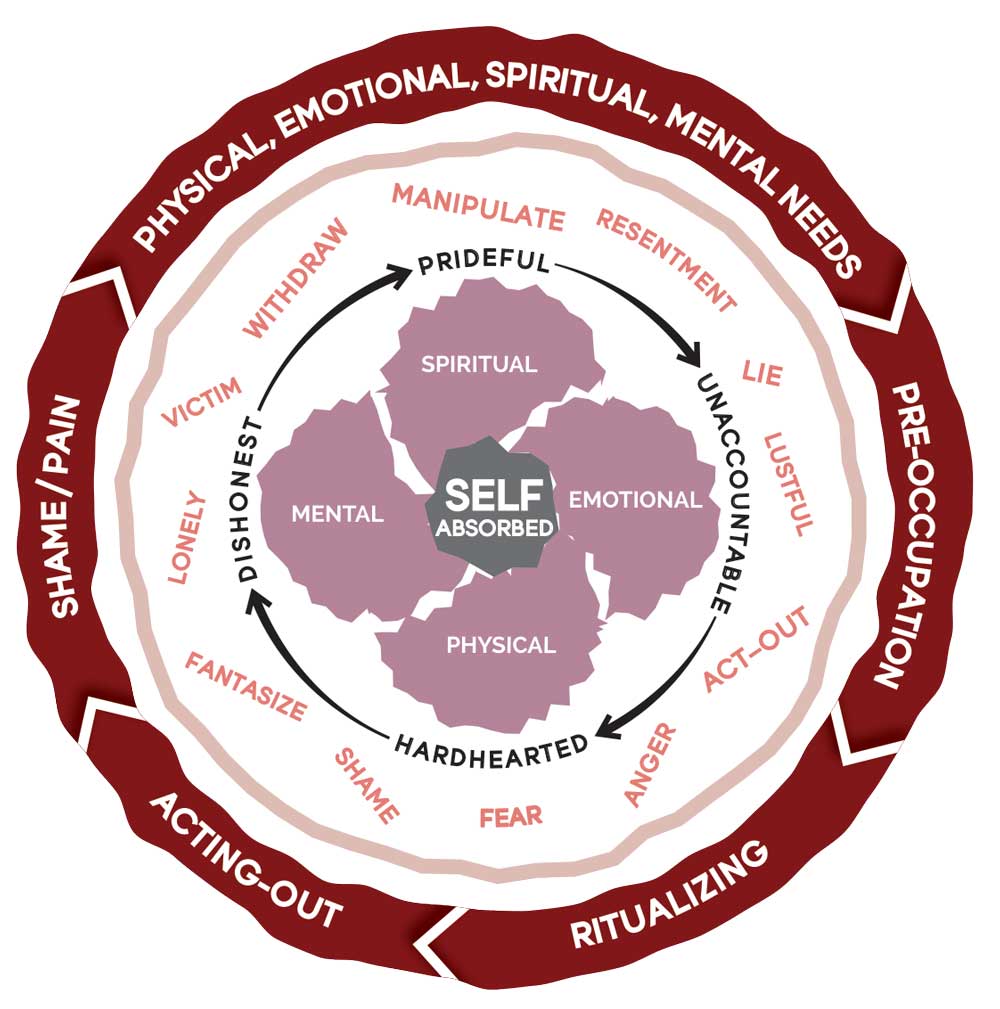
1. Is using pornography a problem?
The choice to use pornography is more than a moral judgment:
“Pornography is neither harmless nor helpful. It is a mood-altering, belief-changing, relationship-damaging, addiction-forming, socially-harmful, spiritually-deadening, life-crippling practice, through which one practices the ways of the adversary.”
—Jill C. Manning, PhD
Three mileposts mark the way of sexual compulsion and addiction: 1) Unhealthy sexual behaviors—such as using pornography and sex with self—provide self-centered pleasures; 2) Such behaviors are pursued to alter moods and emotions. Shame, emotional withdrawal, and self-absorption escalate and life becomes unmanageable; 3) Efforts to stop such “acting out” are unsuccessful—in spite of sincere desires to quit or mushrooming negative consequences.
Escape seems impossible for those who are caught in this vortex of behavioral compulsion or addiction. Serious relationship challenges are inevitable, faith in God may be questioned, and life-threatening consequences may follow. “We saw that our problem was threefold: physical, emotional, and spiritual. [So] healing had to come about in all three.” (Sexaholics Anonymous White Book, p.204)
2. Is recovery possible?
Most emphatically, Yes! If those who are caught in this trap are willing to be honest and strive on the proven path of recovery, it is very likely they can happily live in recovery from compulsive pornography use and sexual addiction. They must also remain open to the spiritual nature of recovery, humbly seeking the enabling power that always flows from God’s grace.
Model of Living in Recovery from Sexual Addiction
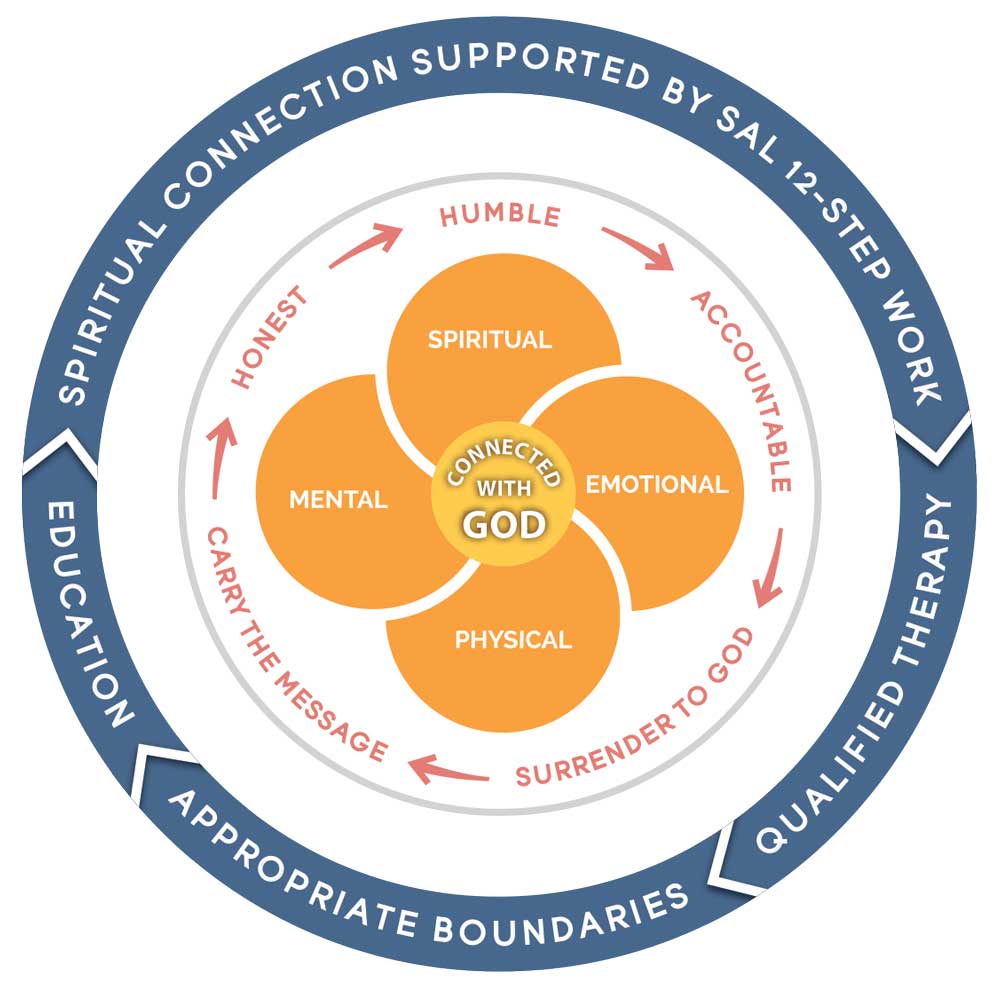
3. How does one “work recovery”?
One must freely choose for himself or herself to step onto the path of recovery—and stay on it. That path is narrow and may seem steep at times, so a long-term commitment is vital. Without a firm resolve to do whatever it takes, discouragement may roll in during setbacks, and sadly, a return to illicit sexual behaviors will likely follow.
To step on the path of recovery the most basic requirements are a willing heart, the courage to be rigorously honest, and an enduring pledge to do the work of recovery.
To stay on the path of recovery one must be rigorously honest, practice daily healthy living by applying the principles of recovery, maintaining a spiritual connection with God, and serving others.
4. What does “living in recovery” look like?
Recovery is both outwardly observed and inwardly felt. When an individual is moving toward recovery, sexual “acting-out” behaviors are removed from his or her life entirely; over time so are all of the other attitudes noted in the Self-Absorbed Chaos Model. Living in recovery is instead characterized by rigorous honesty, humility, accountability, carrying the message of recovery to others, and surrendering to God’s will.
Establishing boundaries around pornography use and other forms of acting out, and being aware of addict attitudes enhances long-term recovery and healing of relationships.
“I urge you to find a way to immerse yourself fully in the life that you’ve been given. To stop running from whatever you’re trying to escape, and instead to stop, and turn, and face whatever it is.
Then I dare you to walk toward it. In this way, the world may reveal itself to you as something magical and awe inspiring that does not require escape. Instead, the world may become something worth paying attention to.
The rewards of finding and maintaining balance are neither immediate nor permanent. They require patience and maintenance. We must be willing to move forward despite being uncertain of what lies ahead. We must have faith that actions today that seem to have no impact in the present moment are in fact accumulating in a positive direction, which will be revealed to us only at some unknown time in the future. Healthy practices happen day by day.”
— Anna Lembke, M.D. , Dopamine Nation, p233
Model of Spouse Betrayal & Trauma
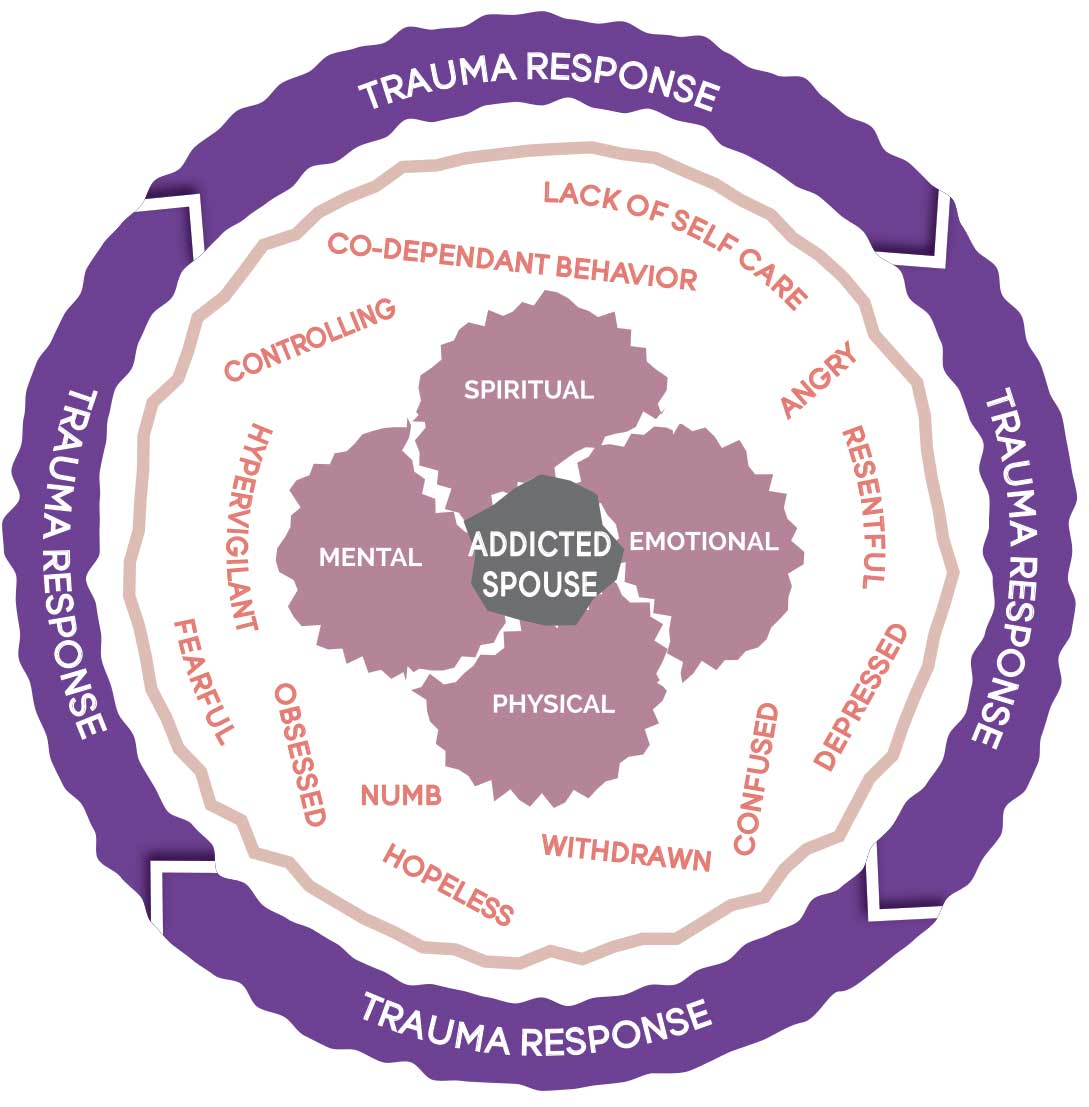
5. How does pornography use affect the spouse?
A pornography or sexual addict is self-absorbed and thus has little or no emotional connection with others. Living with—or having lived with—such a person breeds feelings of confusion and fear in a spouse’s life. These women feel emotionally isolated and doubt their own personal worth. In fact, many characteristics of PTSD (Post Traumatic Stress Disorder) are present in such spouses. This is called betrayal trauma. They often take extreme measures to outwardly appear perfectly in control—yet inside they really feel out of control, “crazy” and unloved.
Most of these women sensed that something was not right in their relationship. But when they questioned their husbands they were met with comments such as “Everything is OK,” or with anger and resentment for even asking.
For a time the betrayed spouse may have felt pacified, but soon became preoccupied with thoughts such as: Why won’t he even talk to me? Maybe if I were more sexual or changed my body, then he would love me. I can fix this for him. Conversely, the spouse may have thought: He’s ruining my life and our family. I feel bitter, angry and afraid. Or, they may have minimized it: It’s not that important. That’s just the way men are.
Eventually the betrayed spouse realized that it was all about the lies. In despair, they didn’t know whether they could trust any aspect of their relationship. Something had to change. Yet they may not have known where to go for support and wise guidance.
Model of Spouse Healing & Recovery
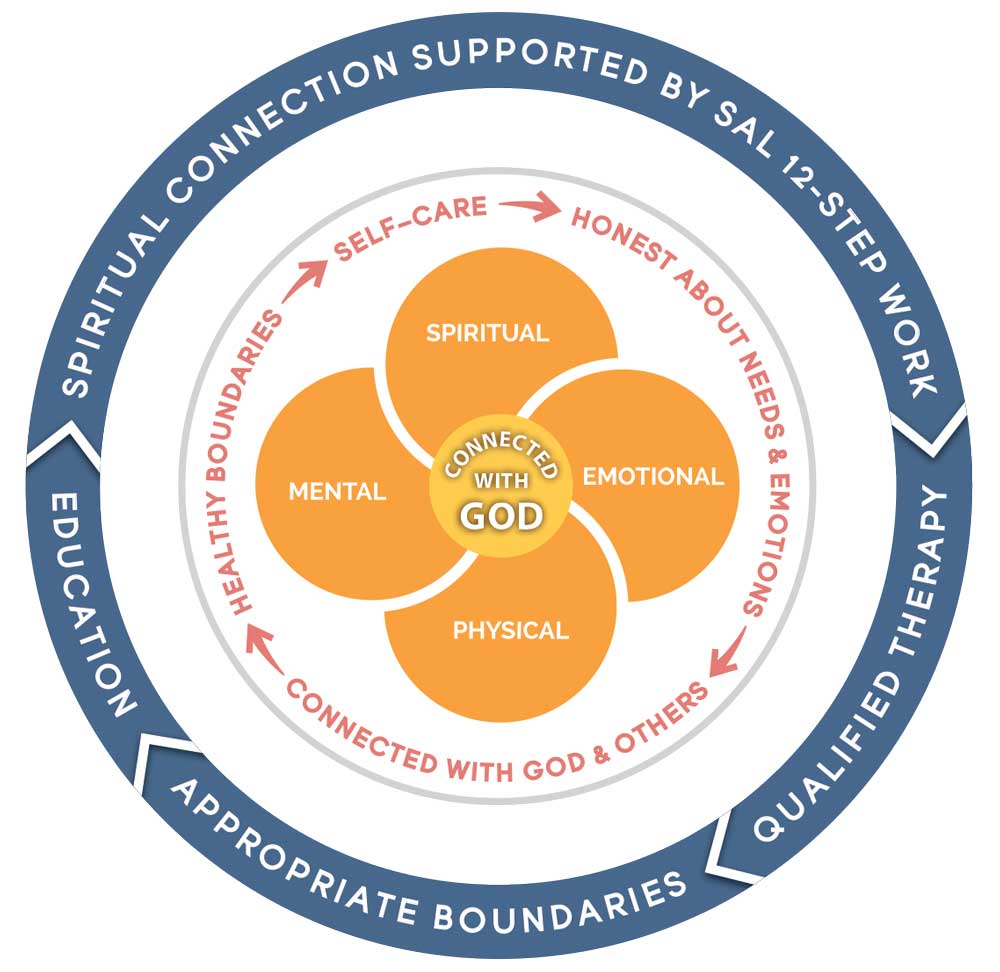
6. How does the spouse heal from betrayal trauma?
To step on the path of healing, traumatized spouses need to embrace these truths: 1) They are not the cause of the addiction; 2) They cannot fix or change their addicted spouse—he is making his own decisions; 3) They have been deeply injured by the deceit, disrespect and anger in their relationship; 4) Only with God’s help can they themselves truly heal and thrive.
Navigating the path of recovery and healing requires personal effort and help from others and includes:
1) Seeking spiritual connection, supported by SAL 12-Step work; 2) Working with a qualified therapist; 3) Education about trauma and addiction; 4) Appropriate boundaries for safety.
Some may argue that all of this effort is unnecessary—after all it is his problem. If he would just stop, then everything would be OK. But it is not that simple. If betrayed spouses do not recover from their own trauma, they may continue to live out an emotionally paralyzed life with fear always at the doorstep.
But with consistent effort, time, and the grace of God, such spouses can and do heal. That is the miracle! They learn how to choose to live a healthy lifestyle, which includes self-care and honesty about their emotions and needs. They also learn how to set healthy boundaries based on safety, love, and respect for themselves and others. Such actions connect them more closely with God, and they become more available for honest and loving relationships.
Explanation of the Circular Models:
The 4 petals within each model represent an individual—or a marriage—as a physical, emotional, spiritual and mental being or entity. The center of the circle indicates the primary focus of the heart. The white area enveloping the 4 petals represents a person’s thoughts, behaviors and emotions. And the outermost circle represents actions, outreach and responses.
Model of the Distressed Marriage
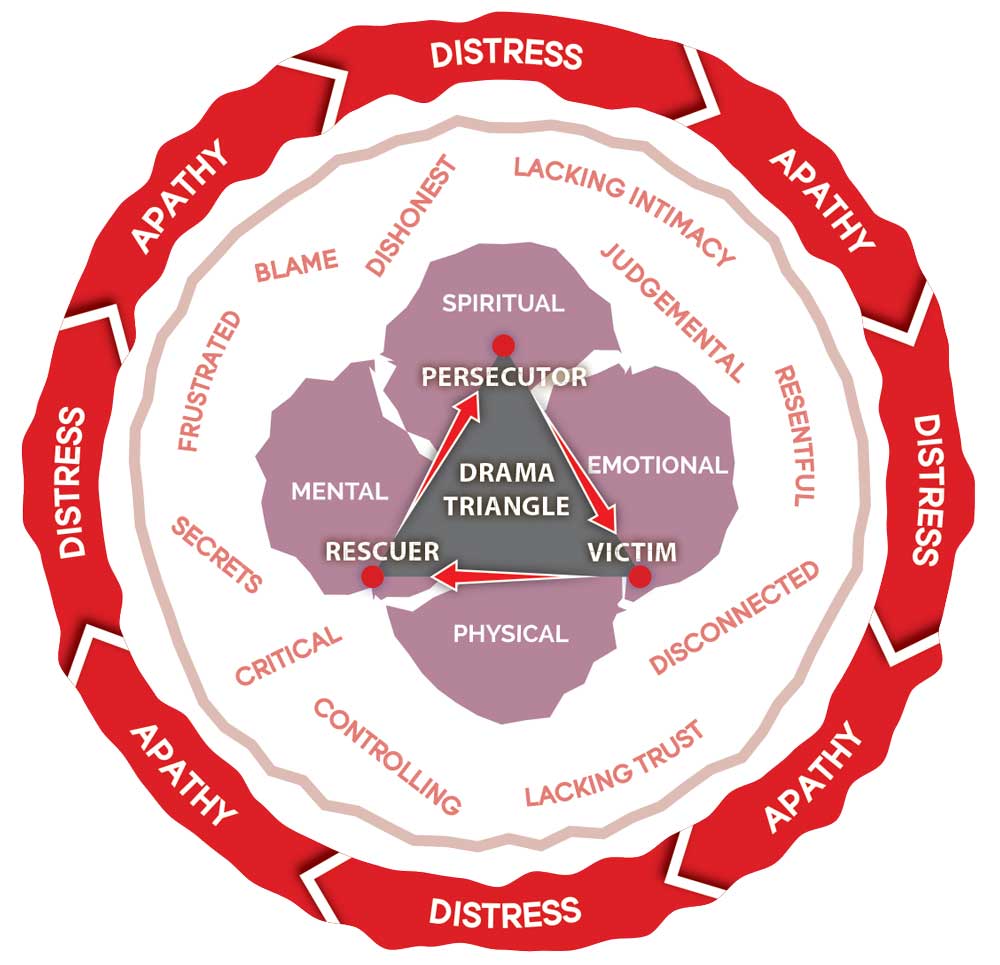
5. How does pornography use affect the spouse?
A pornography or sexual addict is self-absorbed and thus has little or no emotional connection with others. Living with—or having lived with—such a person breeds feelings of confusion and fear in a spouse’s life. These women feel emotionally isolated and doubt their own personal worth. In fact, many characteristics of PTSD (Post Traumatic Stress Disorder) are present in such spouses. This is called betrayal trauma. They often take extreme measures to outwardly appear perfectly in control—yet inside they really feel out of control, “crazy” and unloved.
Most of these women sensed that something was not right in their relationship. But when they questioned their husbands they were met with comments such as “Everything is OK,” or with anger and resentment for even asking.
For a time the betrayed spouse may have felt pacified, but soon became preoccupied with thoughts such as: Why won’t he even talk to me? Maybe if I were more sexual or changed my body, then he would love me. I can fix this for him. Conversely, the spouse may have thought: He’s ruining my life and our family. I feel bitter, angry and afraid. Or, they may have minimized it: It’s not that important. That’s just the way men are.
Eventually the betrayed spouse realized that it was all about the lies. In despair, they didn’t know whether they could trust any aspect of their relationship. Something had to change. Yet they may not have known where to go for support and wise guidance.
Model of Recovering the Distressed Marriage
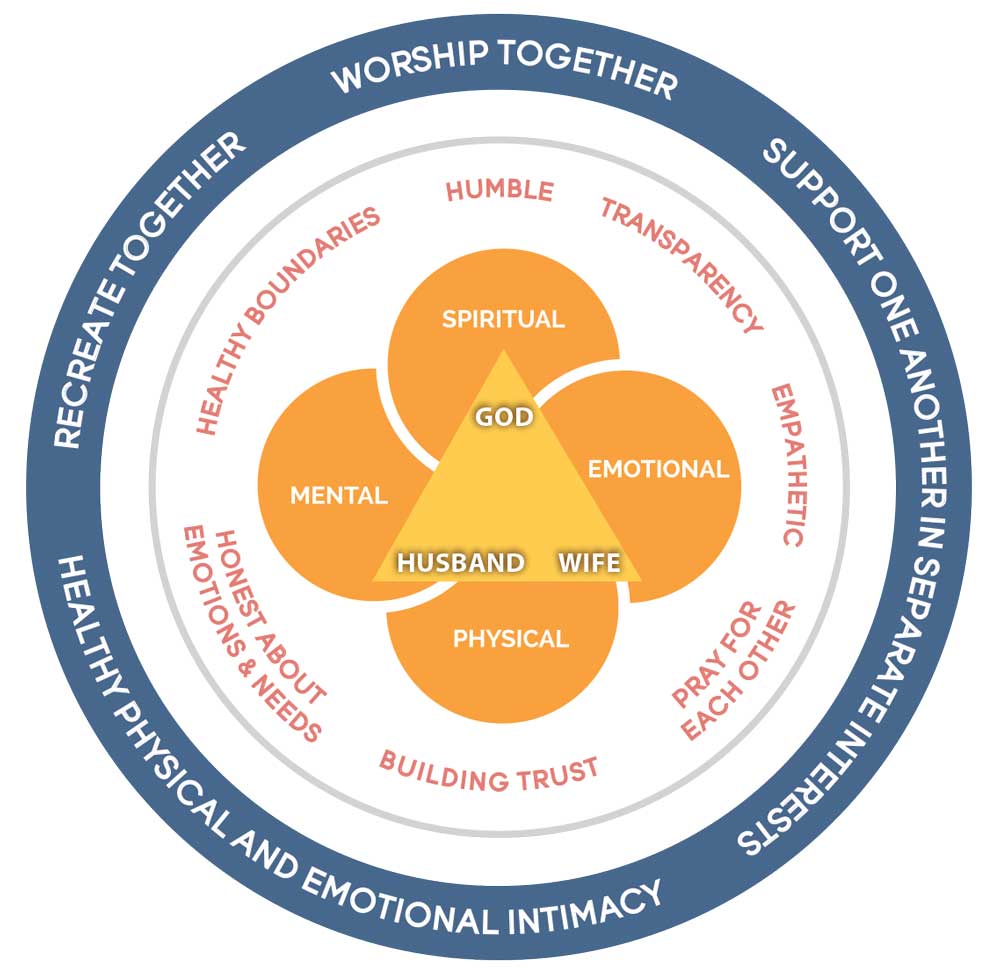
6. How does the spouse heal from betrayal trauma?
To step on the path of healing, traumatized spouses need to embrace these truths: 1) They are not the cause of the addiction; 2) They cannot fix or change their addicted spouse—he is making his own decisions; 3) They have been deeply injured by the deceit, disrespect and anger in their relationship; 4) Only with God’s help can they themselves truly heal and thrive.
Navigating the path of recovery and healing requires personal effort and help from others and includes:
1) Seeking spiritual connection, supported by SAL 12-Step work; 2) Working with a qualified therapist; 3) Education about trauma and addiction; 4) Appropriate boundaries for safety.
Some may argue that all of this effort is unnecessary—after all it is his problem. If he would just stop, then everything would be OK. But it is not that simple. If betrayed spouses do not recover from their own trauma, they may continue to live out an emotionally paralyzed life with fear always at the doorstep.
But with consistent effort, time, and the grace of God, such spouses can and do heal. That is the miracle! They learn how to choose to live a healthy lifestyle, which includes self-care and honesty about their emotions and needs. They also learn how to set healthy boundaries based on safety, love, and respect for themselves and others. Such actions connect them more closely with God, and they become more available for honest and loving relationships.
“It is easier to build strong children than to repair broken men.”
—Frederick Douglass
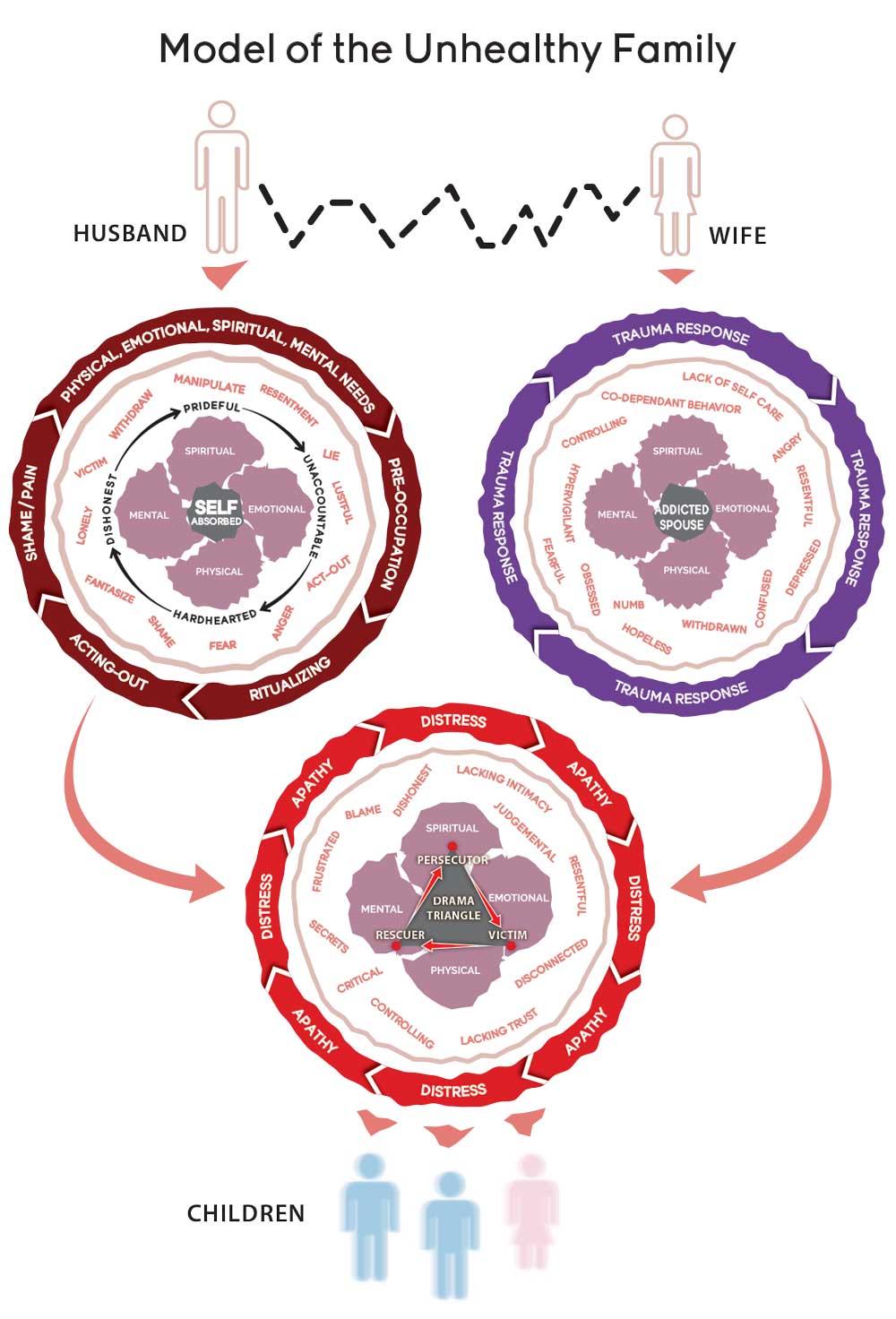
9. How is the family impacted?
Try as they may, unhealthy parents cannot shield children from the collateral damage of addiction and betrayal trauma. This idea has been reaffirmed after two decades of research by The American Academy of Pediatrics who issued a landmark warning that toxic stress can harm children for life. “You can modify behavior later, but you can’t rewire disrupted brain circuits,” says Dr. Jack P. Shonkoff, a Harvard pediatrician and a leader in this field.
Even though they might not know why, children in such families are emotionally distanced from the addicted parent and grow up without a vital sense of belonging and safety. A lack of positive affirmations and encouragement stunts their potential. Their loyalty to the family may waver as they turn outside the family to fulfill their needs and wants.
Without healthy family anchors, children tend to become confused or ambivalent about the line between right and wrong and their relationship with God. Other important values and life skills remain underdeveloped, and their chances for happiness diminish.
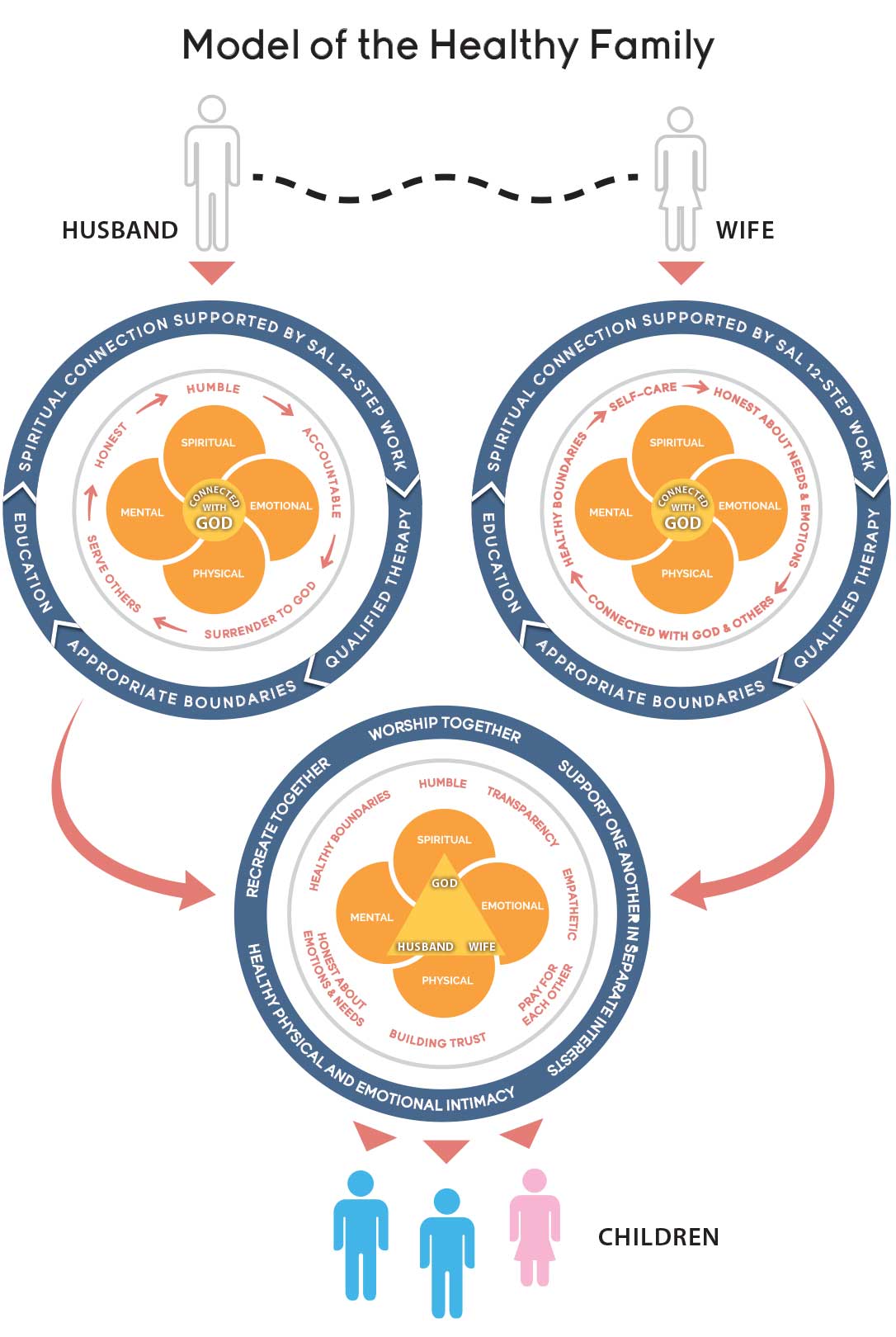
10. How do healthy parents fortify children?
Even if not for themselves at first, addicted spouses or traumatized spouses would do well to seek healing and recovery for the sake of their children. Good fruit (happy and well-adjusted children) comes from a good tree (emotionally healthy parents).
Since children are not born with a clear sense of self, they discover it—and it is molded—through the influence of those who are most important to them. Children come to trust their parents’ values and their love. When children are feeling personally secure, they blossom and mature in healthy ways.
Parents who are unified by their shared relationship with God encourage each child to nurture their own relationship with God. Children become more confident in their understanding of what is right and wrong, kind and mean-spirited, selfless and selfish, respectful and disrespectful.

